Icom IC-M801E Handleiding
Bekijk gratis de handleiding van Icom IC-M801E (80 pagina’s), behorend tot de categorie Receiver. Deze gids werd als nuttig beoordeeld door 39 mensen en kreeg gemiddeld 4.3 sterren uit 20 reviews. Heb je een vraag over Icom IC-M801E of wil je andere gebruikers van dit product iets vragen? Stel een vraag
Pagina 1/80

MF/HF MARINE TRANSCEIVER
iM801 E
INSTRUCTION MANUAL

i
FOREWORD
Thank you for purchasing this Icom product. The IC-
M801E
MF
/
HF MARINE TRANSCEIVER
is designed and
built with Icom’s superior technology and craftsman-
ship. With proper care, this product should provide you
with years of trouble-free operation.
We want to take a couple of moments of your time to
thank you for making the IC-M801E your radio of
choice, and hope you agree with Icom’s philosophy of
“technology first.” Many hours of research and devel-
opment went into the design of your IC-M801E.
D
FEATURES
❍Standard 4
×
8
″
remote controller
❍
Built-in DSC meets ITU Class E requirement
❍12 and 24 V DC versions are available
❍PC connection capability for remote control
IMPORTANT
READ THIS INSTRUCTION MANUAL
CAREFULLY before attempting to operate the
transceiver.
SAVE THIS INSTRUCTION MANUAL. This
manual contains important safety and operating in-
structions for the IC-M801E.
EXPLICIT DEFINITIONS
RWARNING HIGH VOLTAGE! NEVER at-
tach an antenna or internal antenna connector during
transmission. This may result in an electrical shock or
burn.
RWARNING! NEVER connect the transceiver to
an AC outlet directly. This may pose a fire hazard or
result in an electric shock.
RWARNING! NEVER mount the transceiver
main unit overhead. The weight of the unit is approxi-
mately 8.5 kg, but its apparent weight will increase
several fold due to wave shocks or vibration. The unit
must be mounted on a flat hard surface only.
RNEVER connect a power source of more than
15.6 V DC or 31.2 V DC (depending on the transceiver
version). This connection could cause a fire or ruin the
transceiver.
RNEVER place the transceiver where normal oper-
ation of the ship or vehicle may be hindered or where it
could cause bodily injury.
RNEVER let metal, wire or other objects touch any
internal part or connectors on the rear panel of the
transceiver. This may result in an electric shock.
DO NOT use chemical agents such as benzine or al-
cohol when cleaning, as they can damage the trans-
ceiver surface.
During maritime mobile operation, KEEP the trans-
ceiver and handset or microphone as far away as pos-
sible (at least 1 m) from the magnetic navigation com-
pass to prevent erroneous indications.
Use Icom handset or microphones only
(supplied or op-
tional). Other manufacturer’s handset or microphones
have different pin assignments, and connection to the
IC-M801E may damage the transceiver.
AVOID using or placing the transceiver in areas with
temperatures below –15°C or above +55°C.
AVOID placing the transceiver in excessively dusty en-
vironments or in direct sunlight.
AVOID placing the transceiver against walls or putting
anything on top of the transceiver. This will obstruct
heat dissipation.
Place the unit in a secure place to avoid inadvertent
use by children.
BE CAREFUL! The transceiver main unit will become
hot when operating the transceiver continuously for
long periods.
PRECAUTIONS
WORD DEFINITION
R
R
R
R
RWARNING Personal injury, fire hazard or electric
shock may occur.
CAUTION Equipment damage may occur.
NOTE
If disregarded, inconvenience only. No
risk or personal injury, fire or electric
shock.
Icom, Icom Inc. and the are registered trademarks of
Icom Incorporated (Japan) in the United States, the United
Kingdom, Germany, France, Spain, Russia and/or other
countries.
IBM is a registered trademark of International Business Ma-
chines.

ii
When your ship requires assistance, contact other ships and the Coast Guard by sending a distress call using dig-
ital selective calling on an emergency frequency.
IN CASE OF EMERGENCY
When immediate help is needed
qPush and hold [DISTRESS] for 5 sec. until the
short beeps become one long beep, to send the
distress call.
wAfter 8291 kHz is automatically selected (after an
acknowledgement call is received), push and hold
the PTT switch on the handset or microphone and
send the following information.
1. “MAY DAY, MAY DAY, MAY DAY.”
2. “THIS IS……………” (name of ship)
3. “LOCATED AT ……” (ship’s position)
4. Give the reason for the distress call.
5. Explain what assistance you need.
6. Give additional information:
•Ship type
•Ship length
•Ship color
•Number of people on-board
When potential problems exist
qPush [DSC] to select DSC watch mode, if neces-
sary.
wPush [MODE
SET
] to select DSC menu, rotate [CH]
to select “Geographical” then push [ENT].
eFollow the guidance displayed on the LCD (bottom
line), to set up the category, area, traffic and call-
ing frequencies with [CH], [ENT] and keypad.
rPush and hold [CALL] for 1 sec. until the short
beeps become one long beep.
tTransmit the appropriate information using voice.
• DSC equipped ships may monitor your transmission.
FOREWORD................................................i
IMPORTANT .............................................. i
EXPLICIT DEFINITIONS ........................... i
PRECAUTIONS ......................................... i
IN CASE OF EMERGENCY ......................ii
TABLE OF CONTENTS ............................ ii
QUICK REFERENCE............................. I–V
■How to set a Channel/Group .............. I
■Audio output/squelch adjustment ...... II
■Basic voice transmission and
reception ........................................... III
■Receiving a DSC............................... IV
■Transmitting a distress call................ IV
1 OPERATING RULES AND
GUIDELINES......................................... 1
2 PANEL DESCRIPTION .................... 2–7
■Controller (RC-25E) ........................... 2
■Main unit ............................................. 4
■Handset (HS-98) ............................... 5
■LCD screen ....................................... 6
3 SELECTING A CHANNEL/FREQUENCY
........................................................... 8–9
■Selecting a channel ........................... 8
4 RECEIVE AND TRANSMIT .......... 10–12
■Basic voice transmit and receive .... 10
■Function for transmit ........................ 10
■Functions for receive ....................... 11
■FSK operation ................................. 12
5 CHANNEL NAME PROGRAMMING . 13
6 DSC PREPARATION ................... 14–15
■MMSI code programming ................ 14
■Position and time programming ....... 15
7 CALL PROCEDURE .................... 16–28
■Distress call ..................................... 16
■Individual call ................................... 20
■Group call ........................................ 23
■Geographical call ............................. 24
■Semi/Auto (telephone) call .............. 26
■Test call ........................................... 28
8 WHEN RECEIVING A CALL ........ 29–36
■To receive a DSC call ...................... 29
■Received information ....................... 30
■Deleting a memory .......................... 30
■Distress call ..................................... 31
■Distress relay call ............................ 33
■Semi/Auto (telephone) call .............. 34
■Group call ........................................ 35
■Geographical area call .................... 35
■Individual call ................................... 36
9 MEMORY OPERATION ..................... 37
■Memory description ......................... 37
■Memory writing ................................ 37
■Memory reading/transmitting/deleting
......................................................... 37
10 DSC MENU OPERATION ............ 38–41
■General ............................................ 38
■ID input ............................................ 38
■Frequency input ............................... 39
■Verifying self-ID ............................... 40
■Self testing ....................................... 40
■Telephone number input .................. 40
■Memory reading/deleting ................. 41
■Printing out the DSC memory contents
......................................................... 41
11 SET MODE ................................... 42–47
■Quick set mode ............................... 42
■Initial set mode ................................ 43
12 CONNECTION AND INSTALLATION
....................................................... 48–60
■Supplied accessories ...................... 48
■Basic connections ............................49
■Advanced connections .................... 50
■Ground connection .......................... 51
■Power source .................................. 52
■Antenna ........................................... 52
■Mounting .......................................... 53
■Using the optional MB-108 .............. 55
■Using the optional MB-75 ................ 56
■Transceiver dimensions ................... 57
■Fuse replacement ............................ 58
■Connector information ..................... 59
13 FREQUENCY PROGRAMMING .. 61–62
■Frequency selection ........................ 61
■Programming a frequency ............... 62
14 SPECIFICATIONS .............................. 63
15 OPTIONS ........................................... 64
16 TEMPLATE .................................. 65–68
■Remote controller (RC-25E) ............ 65
■Speaker (SP-24E) ........................... 67
ABOUT CE ............................................. 69
TABLE OF CONTENTS
1
2
3
4
5
6
7
8
9
10
11
12
13
14
15
16
Quick Reference
Product specificaties
| Merk: | Icom |
| Categorie: | Receiver |
| Model: | IC-M801E |
Heb je hulp nodig?
Als je hulp nodig hebt met Icom IC-M801E stel dan hieronder een vraag en andere gebruikers zullen je antwoorden
Handleiding Receiver Icom

26 Augustus 2023

19 Juni 2023

17 Juni 2023

14 Juni 2023

12 Juni 2023

11 Juni 2023

8 Juni 2023

6 Juni 2023

5 Juni 2023

31 Mei 2023
Handleiding Receiver
Nieuwste handleidingen voor Receiver
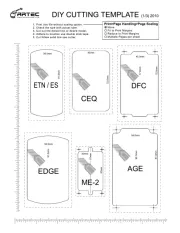
30 Juli 2025
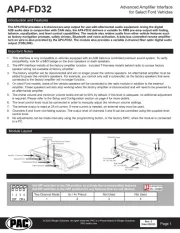
29 Juli 2025
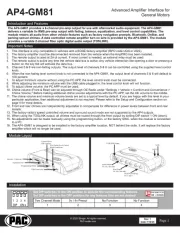
29 Juli 2025
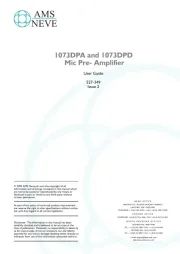
29 Juli 2025
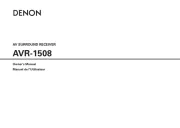
29 Juli 2025
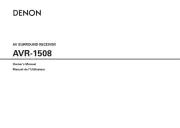
29 Juli 2025
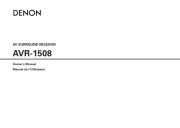
29 Juli 2025
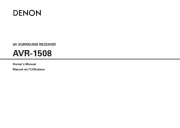
29 Juli 2025
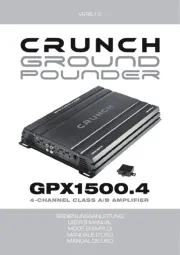
29 Juli 2025
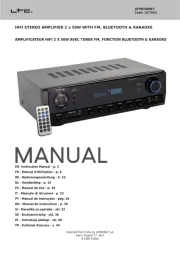
28 Juli 2025